How Does HubSpark Help Business Owners with Lead Generation?
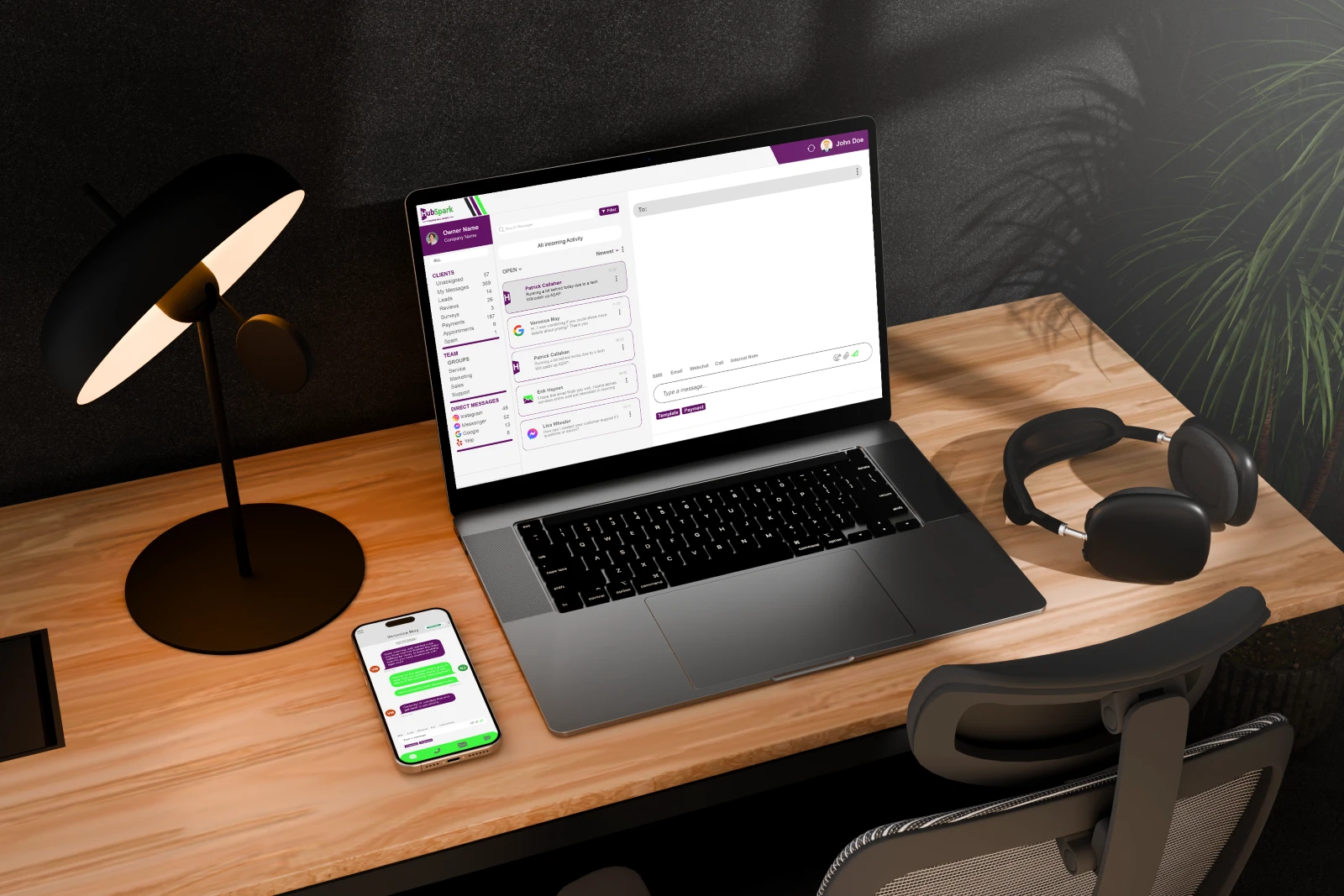
Key Takeaways
- Make your lead generation double strong why choose between inbound and outbound when you can have both? Use content marketing, social media and direct outreach to cover all your bases.
- By using tools like HubSpark you can make the most of your local visibility, your reputation and your site performance all of which help you generate quality leads.
- Implementing a lead lifecycle of capture, qualification, nurture and conversion will increase the return on your investment for every lead.
- By focusing on audience identification and targeted content strategies, you’ll draw in the right prospects, improving engagement and conversion potential.
- To address such issues as inconsistent follow-up, disconnected tools and poor data insights, companies need to deploy integrated platforms and use automation to help ensure efficient, data-driven lead management.
- You should analyze processes and channel performance routinely, letting analytics drive strategy tweaks that keep you one step ahead of the world’s competitive marketplace.
Lead generation means you identify people who desire your offering and direct them to your company. You employ on as well as off-line instruments to identify genuine interest, such as forms, advertisements or direct conversations.
What you’re really trying to do is create a community of prospective buyers who fit your offerings. With solid lead generation, you have increased opportunities to engage, provide valuable information and expand.
Next, you’ll encounter steps to configure your process.
What is Lead Generation?
Lead generation is how you attract strangers, engage them, and drive them toward purchasing from you. It’s handholding people through the funnel, basically — where you get their attention, hook them in, and push them along until they’re ready to purchase. You could use ads, your site, emails, or even a social post to accomplish this.
Every channel is an opportunity to open a dialogue. The idea is to identify potential clients, establish a connection with them and lead them along the path until they are ready to purchase. It’s not just about names—it’s about the right people, at the right time, and helping them understand why your product/service suits their needs.

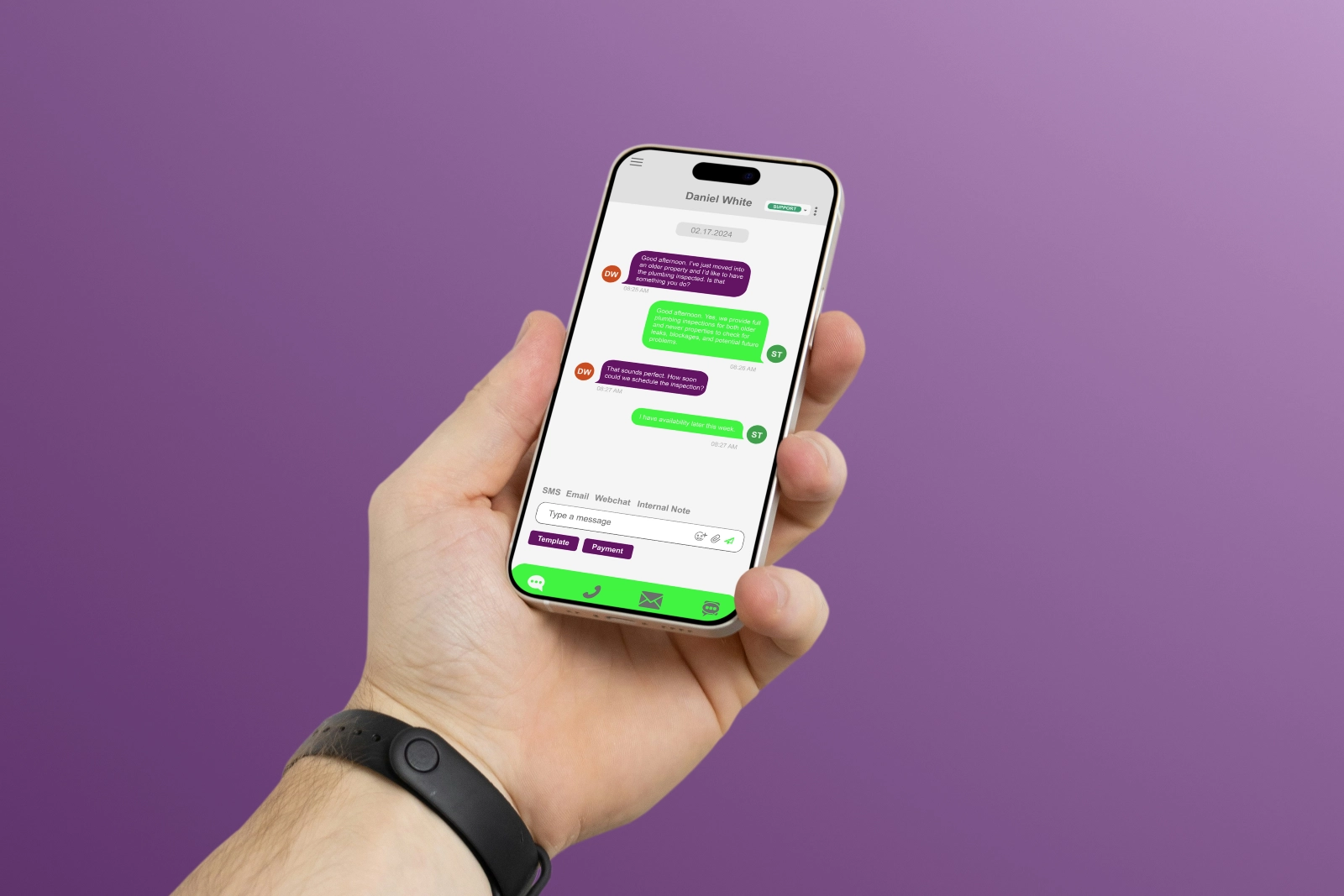
The Definition of Lead Generation
Lead generation is when you get people interested in what you have. You want them to care about what you’re selling enough to give you their contact info or request additional information. You do this by various means—such as posting helpful tips on social, sharing blog posts, conducting webinars, or emailing.
Each can meet people where they hang out online or offline. Lead magnets — free eBooks, checklists, etc. — work because they provide something helpful in exchange for an email or a phone number. This humble transaction assists you in growing an interested list of potential buyers.
Nurturing is essential. Once someone expresses interest, you maintain the connection, provide further information, respond to inquiries, and assist them in making a decision regarding the suitability of your proposition.
Types of Lead Generation
Inbound lead generation is making people come to you by way of useful content. Think e-books, tutorial videos, or Facebook content that address actual queries. Outbound means you go out and find people – could be cold emails, phone calls, billboards, even trade shows.
With B2B, you get longer sales cycles and more decision makers, with B2C it might be faster but requires more personal connection. Digital approaches such as local SEO get you to appear in search results, and PPC ads position you directly in front of people looking for answers.
Below are examples of different lead generation techniques:
- Inbound Leads: Blog posts, SEO, video tutorials, webinars, social media content, eBooks, and newsletters
- Outbound Leads: Cold calling, email outreach, telemarketing, direct mail, outdoor ads, and event marketing
The Importance of Generating Leads
Around 22% of CEOs and CMOs report lead generation is their highest priority. If you nail it, you’ll experience increased sales and a larger portion of your market. Here are key benefits of good lead generation:
-
Boosts revenue: Generating leads mean more chances to sell.
-
Builds lasting customer relationships: Regular contact helps turn leads into loyal fans.
-
Improves marketing efficiency: You spend money where it works best.
-
Supports business growth: A steady stream of lead generation keeps your pipeline full.
-
Keeps you ahead: Strong lead generation helps you outpace competitors.
Without lead generation, it’s hard to keep your head above water or score new business. You need a strategy to identify, engage and cultivate potential buyers — or be left in the dust.

How HubSpark Amplifies Lead Generation
HubSpark provides you with a complete toolkit for effective lead generation. You receive lead generation tools to expand your audience, enhance your online presence, and capture quality leads from everything. HubSpark is built for businesses who want real results, not just more noise.
1. Local Visibility
HubSpark amplifies your local SEO so you appear when people near you search for your offerings. With multi-stop data verification, it keeps your business info accurate everywhere online to prevent confused listings or missed leads.
Google My Business integration ensures your listing receives updates quickly and remains accurate, boosting your position in local search rankings. Higher positions imply you obtain additional walk-ins and web inquiries from those nearby.
Leveraging these localized tactics simplifies reaching your true potential attendees, not a generic mass.
2. Reputation Management
Review and feedback management in one dashboard. HubSpark Reviews module integrates reviews from leading sites such as Google and Facebook, enabling you to respond quickly and maintain a positive public reputation.
Positive reviews matter–they establish trust and make people more likely to contact you. HubSpark allows you to request reviews, thank satisfied clients, and resolve problems before they escalate.
Active and feedback listening demonstrates you care, which makes people want to do business with you.
3. Centralized Communication
All your chats, emails and calls funnel through one platform with the HubSpark Inbox. It makes it simple to capture and organize details of each new lead, so that you can follow-up at the right time.
You can track the complete lead path — every step they take, from initial click through final response. HubSpark CRM keeps data synced so you never drop a lead or send a duplicate message.
You achieve both a streamlined process and an improved customer experience.
4. Automated Lead Nurturing
You can configure workflows to deliver marketing messages or offers based on lead behavior, such as opening an email or completing a form. This saves you time and keeps leads moving through your pipeline stages.
Personalized messages stick better, and HubSpark Marketing module helps you send them via email, phone or social. Analytics tell you what works, so you can hone and optimize with every campaign.
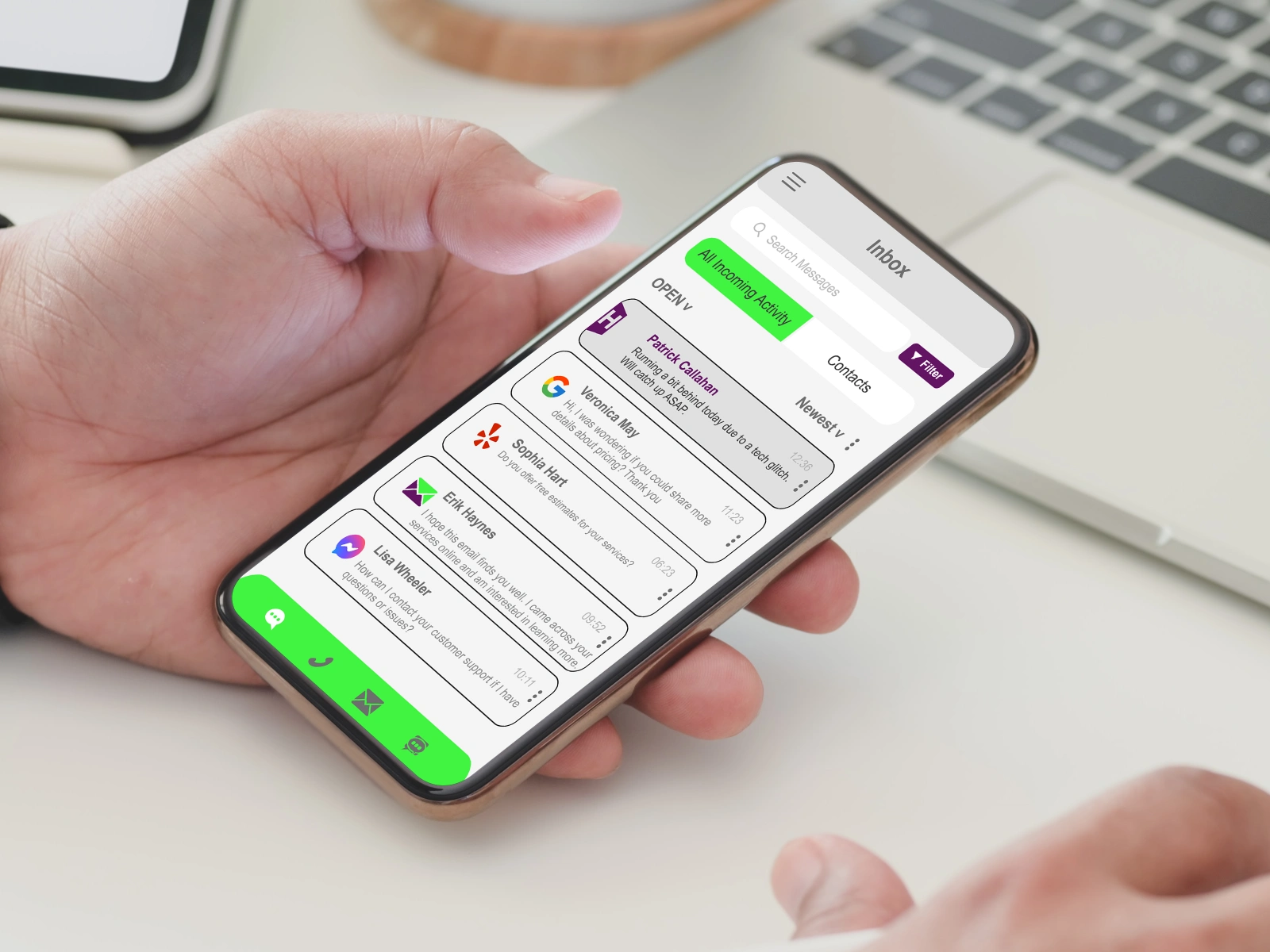
The Lead Management Lifecycle
The lead management lifecycle is how a person goes from initial contact with your brand to when they purchase from you. It divides up into multiple phases, all crucial for converting interest into actual sales.
Businesses that employ a robust lead management lifecycle get prospects through the funnel more quickly — winning you more buyers and less wasted effort. If you miss or delay one step, you risk missing out on as much as 95% of your revenue every year.
Below is a table showing the core stages and why they matter:
|
Stage |
Description |
Significance |
|---|---|---|
|
Capturing |
Collect details from prospects via forms or sign-ups |
Starts the relationship, builds your database |
|
Qualifying |
Check if leads match your ideal buyer profile |
Saves time, focuses on real opportunities |
|
Nurturing |
Keep leads engaged through info, updates, and offers |
Moves leads to buying stage, builds trust |
|
Converting |
Turn leads into paying customers |
Drives revenue, completes the sales cycle |
A well-defined lead management lifecycle lets you monitor each stage, react quickly, and patch leaks before they become expensive. With automation and analytics increasing your odds, reach your leads quickly, and you’re 400% more likely to close a deal.

Lead Capture
Lead capture forms are your primary means of gathering information from potential purchasers. These forms should be easy and show up where logical—such as at the conclusion of a useful post or anytime you provide a free download.
Checklist for Lead Capture Forms:
- Make it brief—request just the basics (name, email, perhaps one other piece of information)
- Word it in clear terms that tell people what they receive by signing up.
- Include privacy notices, so visitors are aware their information is secure.
- Ensure the form is mobile-friendly and straightforward to complete.
- Test different designs and placements for best results.
Give them something worth it — a white paper, a free sample, a drawing — to entice people to complete your form. Use Google analytics to check which forms receive the highest response and continue to adjust your tactic.
Qualifying Leads
Qualifying leads is sifting through to see which humans are worth your time. No one who provides you info is ready/willing/even suited to purchase.
Consider factors such as their engagement with your content, their requests, and whether or not they fit your ideal buyer profile. See if they match your buyer persona – such as job role, company size or country.
Lead scoring can help you apply a value to each lead based on behavior and fit. Top scores can be assigned to your sales team as sales qualified leads (SQLs). Lower scores can be nurtured, or dropped. Polish your criteria regularly to maintain your process cutting.
Nurturing Leads
Nurturing is about staying connected to leads who are not ready to purchase. This involves targeted emails, helpful articles, and updates.
Provide tips, free tools, or events. Custom messages make people feel noticed and increase confidence. HubSpark CRM and HubSpark Inbox allows you to track every call, email, and link clicked.
That way, you know what each lead likes and when to follow up. Continue to refine your content to better align with your lead’s interest.
Converting Leads to Customers
Converting leads to customers is vital for any business. Your goal at this point is to give them the path of least resistance to make a purchase.
Apply easy calls-to-action, such as ‘Start my free trial’ or ‘Get my quote’. Be explicit in your offers. Dig into objections early, for instance using FAQs or live chat.
Analyze your sales results to identify patterns of success and failure, and adjust your procedure accordingly.
Generating Quality Leads
Getting quality leads is about more than just capturing a name or an email. You want real leads, real folks interested in what you do, who are going to purchase or sign u. If you hit the wrong crowd–you waste time and money. About two-thirds of marketers say getting enough traffic is tough, and most face the same problem: targeting the right people.
A quality lead is a person displaying genuine interest and is much more prone to get activated. To attract these leads you have to know your audience, develop good content and choose your channels.
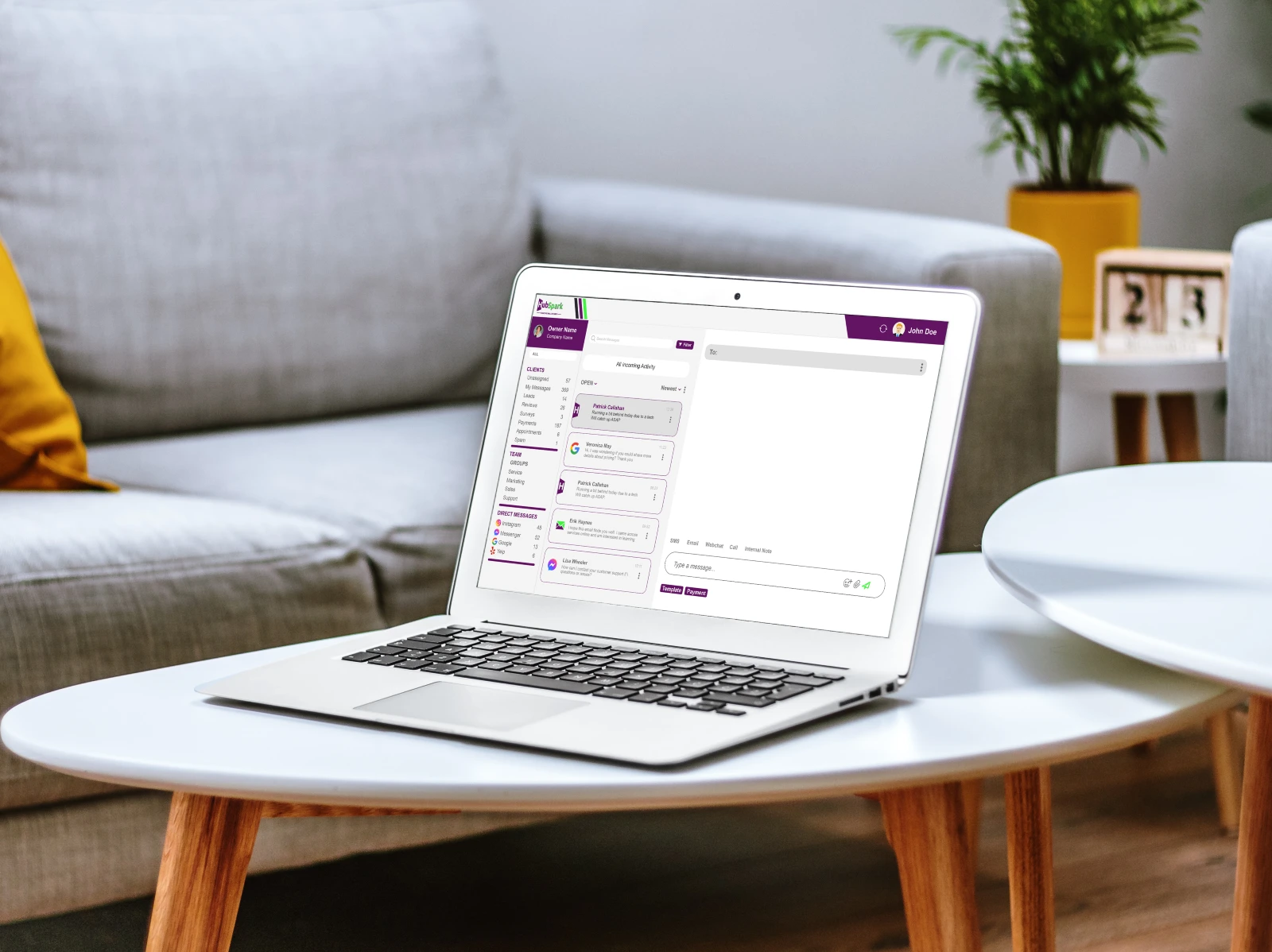
Key strategies for generating quality leads:
- Build detailed buyer personas to guide your outreach.
- Use targeted campaigns instead of broad, impersonal blasts.
- Create content that answers real pain points and questions.
- Test different channels and measure what works.
- Make forms as short as possible—five fields tends to be the sweet spot.
- Filter leads using a three-step qualification process.
- Nurture leads, because half of them aren’t ready to buy initially.
Audience Identification
Knowing who you’re talking to is at the heart of any effective lead generation campaign. If you miss this step, your message flops. Begin by mining your data—site visits, sales history, and social media insights. There’s a lot you can learn from what people are already doing and saying, which can significantly enhance your lead generation strategies.
Hear it straight from users through surveys and feedback forms. Verify age, location, occupation, interests and lifestyle. This aids identifying patterns across cultures and locations, critical for a worldwide brand.
Develop buyer personas that dig beyond superficial details. Put in actual objectives, hurdles, and what motivates them daily. These sketches steer all your outreach, ensuring you address the right problems the right way.
Don’t treat personas as static—adjust them frequently as you gather more data. Markets are moving fast, so keep up with the evolving landscape of potential customers.
Content Strategy
A defined content strategy attracts quality leads. Great content answers questions, solves problems and initiates genuine conversation. For instance, blogs can deconstruct a process, whereas a quick video demonstrates your service.
Infographics can be utilized to effectively encapsulate statistics or procedures for those in a hurry. Experiment with them—what works for one audience may not for another.
The idea is to align what you produce with what your audience values. If you concentrate on real needs and talk their language, you’ll receive attention.
Keep in mind, folks are sick of empty commercials – 81% want brands to demonstrate that they ‘get’ them. Let data drive your topics, and refresh old posts as trends change. If your content is helpful, the leads will arrive.
Channel Selection
Choosing the right channels counts. You want to show up where your audience is– not everywhere. Utilize social media by meeting people where they are—Instagram for the younger crowd, LinkedIn for business pros.
Email is mighty for follow up and keeps you connected with leads who aren’t quite ready to make a purchase. SEO makes your content discoverable when someone searches for a problem you solve.
Experiment with a mix of channels initially, and then tailor your approach based on what proves most effective. Check opens, clicks and form fills.
Drop the not working and put more in the working. That first visit kicks off your lead generation funnel—map every subsequent step so you know where you lose or WIN leads. If you keep testing and learning, your process gets sharper and your leads get better.

Overcoming Common Hurdles in Generating Leads
The lead generation process can seem like a never-ending juggle. You encounter obstacles that impede momentum and squander energy, such as poor follow-up and messy data. To achieve effective lead generation, you must approach each challenge with attention and strategic lead generation strategies.
Inconsistent Follow-Up
Miss the timing with leads and you lose them. The timing is important in the lead generation process. If you wait too long, interest falls off, and your message gets buried. Most potential leads will walk if they don’t hear from you soon. Any sluggish response can translate into missed revenue and a bad brand reputation.
To remedy this, establish an audience-appropriate follow-up schedule. Make a plan so nobody falls through the cracks! Data reveals that extended outreach cadences—greater than five touches—increase your likelihood of success by 160%. Utilize HubSpark Marketing module for automated reminders to help you stay on track—never let a lead slip through the cracks.
Make your messages personal with HubSpark Marketing personalization tokens. Address the qualified lead by name, reference their needs, and demonstrate you ‘get’ what they want. A personal note goes a long way. Experiment with timing and format—emails, calls, or even quick videos.
You are going to see low response rates from your approach, change it. If you continue to do the same, you’re not going to get better results.
Disconnected Tools
When you use a bunch of disconnected tools, lead tracking becomes a pain. You lose information, miss status updates, and lose time transferring info from one location to another. If your systems are disjointed, you don’t have the whole lead story. This confusion costs you sales and can frustrate your team.
One platform for lead management assists. By centralizing all activity — emails, calls, notes — you can view every touchpoint. You are more likely to notice trends and holes this way. HubSpark connects all it’s modules which can help you accelerate activities, and maintains data hygiene.
You can identify what outreach is effective, discover any gaps, and adjust your approach. Investing HubSpark, an all-in-one software platform, saves you time and assists you in serving leads sooner.
Poor Data Insights
Bad data equals bad decisions. If your data’s outdated, inaccurate or dispersed, you may as well flush your efforts down the toilet. You could contact the wrong folks or overlook important segments. Bad data drags down your team and causes you to miss opportunities.
Good data is key. Arrange checkpoints to error-check as data arrives. Leverage content audits to identify weak points. Juice up your blog with data, fresh key terms and obvious graphics.
Analytics assist you observe what has working and what doesn’t. Monitor what content gets clicked, which topics attract the most leads and how visitors behave on your site. Leverage this data to be more intelligent in your decisions and your campaign tuning. Treat your data seriously—obtain permission and secure it so that you establish trust.
The HubSpark Advantage
A unified platform like HubSpark provides you with a single location for all your lead efforts. This eliminates the need to switch from app to app. You can maintain your attention on the leads, not on repair tech headaches. HubSpark brings prospect work, deal tracking and revenue tools together in one place. This way, your data stays consolidated and your team stays aligned.
When you use multiple tools, you get data silos and friction. That bogs you down. With HubSpark, there’s less friction and more time to talk to leads and close deals.
|
Benefit |
What You Get |
How It Helps You |
|---|---|---|
|
Centralized Data |
All lead info in one place |
Faster access, fewer errors, no data silos |
|
Multi-Channel Personalization |
Smart outreach across channels |
Better, more relevant contact with your leads |
|
Streamlined Workflow |
One login for all your tools |
Save time, boost team focus, cut busywork |
|
Rapid Deployment |
Quick setup and launch |
See results in weeks, not months |
|
End-to-End Lead Management |
From first touch to closed deal |
Smooth tracking, less manual work |
|
Handles Complex Sales Cycles |
Built for long sales processes |
Stay organized, no drop-offs for big deals |
|
Revenue Intelligence |
Real-time insights and analytics |
Make smart choices, spot trends, act fast |
HubSpark’s modules talk to each other, so you can create multi-channel campaigns without duplicating data or generating additional reports. HubSpark can personalize each touchpoint, from initial email to last call, so each prospect receives a message that suits their needs.
This means your team can follow up leads quicker, with less hunch work. You observe what’s working in real time. That allows you to adjust your schedule and continue to optimize.
Too many companies still have stacks of point solutions, each with its own login and own data. That complicates matters. It means you fritter away time exporting, merging, or cleaning up lists.
With HubSpark, you shift all of that to a single dashboard. This saves hours each week, so your team can do what matters: talk to leads, close deals, and bring in revenue. If you run a long sales cycle – like a quarter or two – you need this type of order to stay on top of every step and prevent leads from falling through the cracks.
HubSpark pro9vides businesses quick and reliability functionality. You don’t require months to configure HubSpark. In a matter of weeks, you can observe tangible improvements. Your team does less grunt work, more valuable work.
HubSpark can identify emerging trends, overlooked opportunities, and make informed real-time decisions. HubSpark’s unified platform doesn’t merely address lead gen pain points. You create a platform that scales with you.
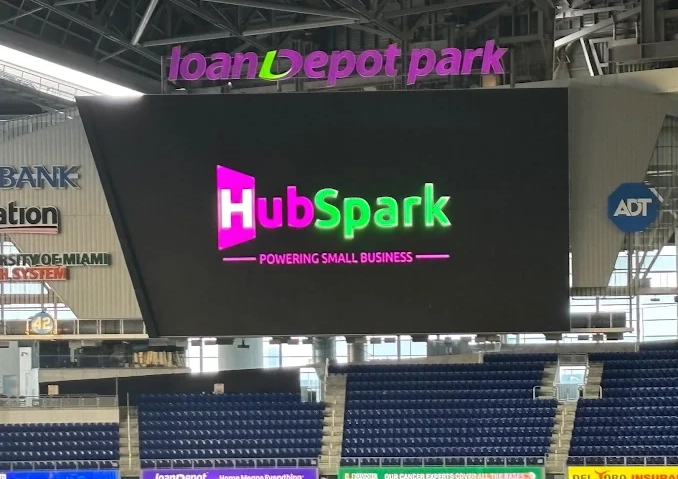
Are You Ready to Start Generating Leads? Contact HubSpark Today!
Lead generation fuels growth, and implementing effective lead generation strategies is essential. You require a clever strategy and clever tools to generate actual leads. HubSpark provides a unified place to monitor, categorize, and engage potential leads. You catch holes in your lead generation process more quickly and address them with concrete actions. You get to see leads progress from initial contact through closing, saving hours by bypassing sluggish manual steps. Your team remains aligned, even in rapid transformation, as you maintain clean and easily accessible data. To establish trust, deliver fast responses and transparent information. If you are ready to start generating leads and provide your team with an all-in-one software platform for lead management, contact HubSpark today to get started!
Frequently Asked Questions
Lead generation is the art of drawing in and harvesting potential leads who might want to be your customer. It assists marketing teams in seeking out those who want what you’re selling.
HubSpark simplifies your lead generation process — it automates tasks, tracks interactions, and centralizes your data. This leads to more effective lead generation and qualified leads sooner — more efficiently than they’re used to.
Lead management enhances your lead generation process by allowing you to sort, track, and nurture potential leads from initial contact to sale, increasing the chances of converting them into customers for life.
Premium leads fit your perfect customer profile, demonstrate genuine interest, and are likely to purchase. Focusing on effective lead generation strategies will increase your sales and save your team time.
Be transparent, utilize effective lead generation strategies, and analyze the lead data. These assist you in contacting the proper audience and polishing your marketing efforts.
One platform integrates your lead generation tools and data, saving you time and reducing errors while providing actionable insights to optimize your effective lead generation strategies.
Whether it’s capturing, qualifying, nurturing, or converting leads into customers, effective lead generation strategies assist you in closing more deals.

Request a Free Demo
(no credit card required)
- Key Takeaways
- What is Lead Generation?
- How HubSpark Amplifies Lead Generation
- The Lead Management Lifecycle
- Generating Quality Leads
- Overcoming Common Hurdles
- The Unified Platform Advantage
- Conclusion
- Frequently Asked Questions
- What is lead generation?
- How does HubSpark improve my lead generation?
- Why is lead management important?
- What makes a lead high quality?
- How can I overcome common lead generation challenges?
- What is the benefit of a unified platform for lead generation?
- What are the key steps in the lead management lifecycle?

Key Takeaways
- Make your lead generation double strong why choose between inbound and outbound when you can have both? Use content marketing, social media and direct outreach to cover all your bases.
- By using tools like HubSpark you can make the most of your local visibility, your reputation and your site performance all of which help you generate quality leads.
- Implementing a lead lifecycle of capture, qualification, nurture and conversion will increase the return on your investment for every lead.
- By focusing on audience identification and targeted content strategies, you’ll draw in the right prospects, improving engagement and conversion potential.
- To address such issues as inconsistent follow-up, disconnected tools and poor data insights, companies need to deploy integrated platforms and use automation to help ensure efficient, data-driven lead management.
- You should analyze processes and channel performance routinely, letting analytics drive strategy tweaks that keep you one step ahead of the world’s competitive marketplace.
Lead generation means you identify people who desire your offering and direct them to your company. You employ on as well as off-line instruments to identify genuine interest, such as forms, advertisements or direct conversations.
What you’re really trying to do is create a community of prospective buyers who fit your offerings. With solid lead generation, you have increased opportunities to engage, provide valuable information and expand.
Next, you’ll encounter steps to configure your process.
What is Lead Generation?

Lead generation is how you attract strangers, engage them, and drive them toward purchasing from you. It’s handholding people through the funnel, basically — where you get their attention, hook them in, and push them along until they’re ready to purchase. You could use ads, your site, emails, or even a social post to accomplish this.
Every channel is an opportunity to open a dialogue. The idea is to identify potential clients, establish a connection with them and lead them along the path until they are ready to purchase. It’s not just about names—it’s about the right people, at the right time, and helping them understand why your product/service suits their needs.
The Definition of Lead Generation

Lead generation is when you get people interested in what you have. You want them to care about what you’re selling enough to give you their contact info or request additional information. You do this by various means—such as posting helpful tips on social, sharing blog posts, conducting webinars, or emailing.
Each can meet people where they hang out online or offline. Lead magnets — free eBooks, checklists, etc. — work because they provide something helpful in exchange for an email or a phone number. This humble transaction assists you in growing an interested list of potential buyers.
Nurturing is essential. Once someone expresses interest, you maintain the connection, provide further information, respond to inquiries, and assist them in making a decision regarding the suitability of your proposition.
Types of Lead Generation
Inbound lead generation is making people come to you by way of useful content. Think e-books, tutorial videos, or Facebook content that address actual queries. Outbound means you go out and find people – could be cold emails, phone calls, billboards, even trade shows.
With B2B, you get longer sales cycles and more decision makers, with B2C it might be faster but requires more personal connection. Digital approaches such as local SEO get you to appear in search results, and PPC ads position you directly in front of people looking for answers.
Below are examples of different lead generation techniques:
- Inbound Leads: Blog posts, SEO, video tutorials, webinars, social media content, eBooks, and newsletters
- Outbound Leads: Cold calling, email outreach, telemarketing, direct mail, outdoor ads, and event marketing
The Importance of Generating Leads

Around 22% of CEOs and CMOs report lead generation is their highest priority. If you nail it, you’ll experience increased sales and a larger portion of your market. Here are key benefits of good lead generation:
Boosts revenue: Generating leads mean more chances to sell.
Builds lasting customer relationships: Regular contact helps turn leads into loyal fans.
Improves marketing efficiency: You spend money where it works best.
Supports business growth: A steady stream of lead generation keeps your pipeline full.
Keeps you ahead: Strong lead generation helps you outpace competitors.
Without lead generation, it’s hard to keep your head above water or score new business. You need a strategy to identify, engage and cultivate potential buyers — or be left in the dust.
How HubSpark Amplifies Lead Generation
HubSpark provides you with a complete toolkit for effective lead generation. You receive lead generation tools to expand your audience, enhance your online presence, and capture quality leads from everything. HubSpark is built for businesses who want real results, not just more noise.
1. Local Visibility
HubSpark amplifies your local SEO so you appear when people near you search for your offerings. With multi-stop data verification, it keeps your business info accurate everywhere online to prevent confused listings or missed leads.
Google My Business integration ensures your listing receives updates quickly and remains accurate, boosting your position in local search rankings. Higher positions imply you obtain additional walk-ins and web inquiries from those nearby.
Leveraging these localized tactics simplifies reaching your true potential attendees, not a generic mass.
2. Reputation Management
Review and feedback management in one dashboard. HubSpark Reviews module integrates reviews from leading sites such as Google and Facebook, enabling you to respond quickly and maintain a positive public reputation.
Positive reviews matter–they establish trust and make people more likely to contact you. HubSpark allows you to request reviews, thank satisfied clients, and resolve problems before they escalate.
Active and feedback listening demonstrates you care, which makes people want to do business with you.
3. Centralized Communication
All your chats, emails and calls funnel through one platform with the HubSpark Inbox. It makes it simple to capture and organize details of each new lead, so that you can follow-up at the right time.
You can track the complete lead path — every step they take, from initial click through final response. HubSpark CRM keeps data synced so you never drop a lead or send a duplicate message.
You achieve both a streamlined process and an improved customer experience.
5. Automated Lead Nurturing
You can configure workflows to deliver marketing messages or offers based on lead behavior, such as opening an email or completing a form. This saves you time and keeps leads moving through your pipeline stages.
Personalized messages stick better, and HubSpark Marketing module helps you send them via email, phone or social. Analytics tell you what works, so you can hone and optimize with every campaign.
The Lead Management Lifecycle

The lead management lifecycle is how a person goes from initial contact with your brand to when they purchase from you. It divides up into multiple phases, all crucial for converting interest into actual sales.
Businesses that employ a robust lead management lifecycle get prospects through the funnel more quickly — winning you more buyers and less wasted effort. If you miss or delay one step, you risk missing out on as much as 95% of your revenue every year.
Below is a table showing the core stages and why they matter:
Stage | Description | Significance |
|---|---|---|
Capturing | Collect details from prospects via forms or sign-ups | Starts the relationship, builds your database |
Qualifying | Check if leads match your ideal buyer profile | Saves time, focuses on real opportunities |
Nurturing | Keep leads engaged through info, updates, and offers | Moves leads to buying stage, builds trust |
Converting | Turn leads into paying customers | Drives revenue, completes the sales cycle |
A well-defined lead management lifecycle lets you monitor each stage, react quickly, and patch leaks before they become expensive. With automation and analytics increasing your odds, reach your leads quickly, and you’re 400% more likely to close a deal.
Lead Capture

Lead capture forms are your primary means of gathering information from potential purchasers. These forms should be easy and show up where logical—such as at the conclusion of a useful post or anytime you provide a free download.
Checklist for Lead Capture Forms:
- Make it brief—request just the basics (name, email, perhaps one other piece of information)
- Word it in clear terms that tell people what they receive by signing up.
- Include privacy notices, so visitors are aware their information is secure.
- Ensure the form is mobile-friendly and straightforward to complete.
- Test different designs and placements for best results.
Give them something worth it — a white paper, a free sample, a drawing — to entice people to complete your form. Use Google analytics to check which forms receive the highest response and continue to adjust your tactic.
Qualifying Leads
Qualifying leads is sifting through to see which humans are worth your time. No one who provides you info is ready/willing/even suited to purchase.
Consider factors such as their engagement with your content, their requests, and whether or not they fit your ideal buyer profile. See if they match your buyer persona – such as job role, company size or country.
Lead scoring can help you apply a value to each lead based on behavior and fit. Top scores can be assigned to your sales team as sales qualified leads (SQLs). Lower scores can be nurtured, or dropped. Polish your criteria regularly to maintain your process cutting.
Nurturing Leads
Nurturing is about staying connected to leads who are not ready to purchase. This involves targeted emails, helpful articles, and updates.
Provide tips, free tools, or events. Custom messages make people feel noticed and increase confidence. HubSpark CRM and HubSpark Inbox allows you to track every call, email, and link clicked.
That way, you know what each lead likes and when to follow up. Continue to refine your content to better align with your lead’s interest.
Converting Leads to Customers
Converting leads to customers is vital for any business. Your goal at this point is to give them the path of least resistance to make a purchase.
Apply easy calls-to-action, such as ‘Start my free trial’ or ‘Get my quote’. Be explicit in your offers. Dig into objections early, for instance using FAQs or live chat.
Analyze your sales results to identify patterns of success and failure, and adjust your procedure accordingly.
Generating Quality Leads
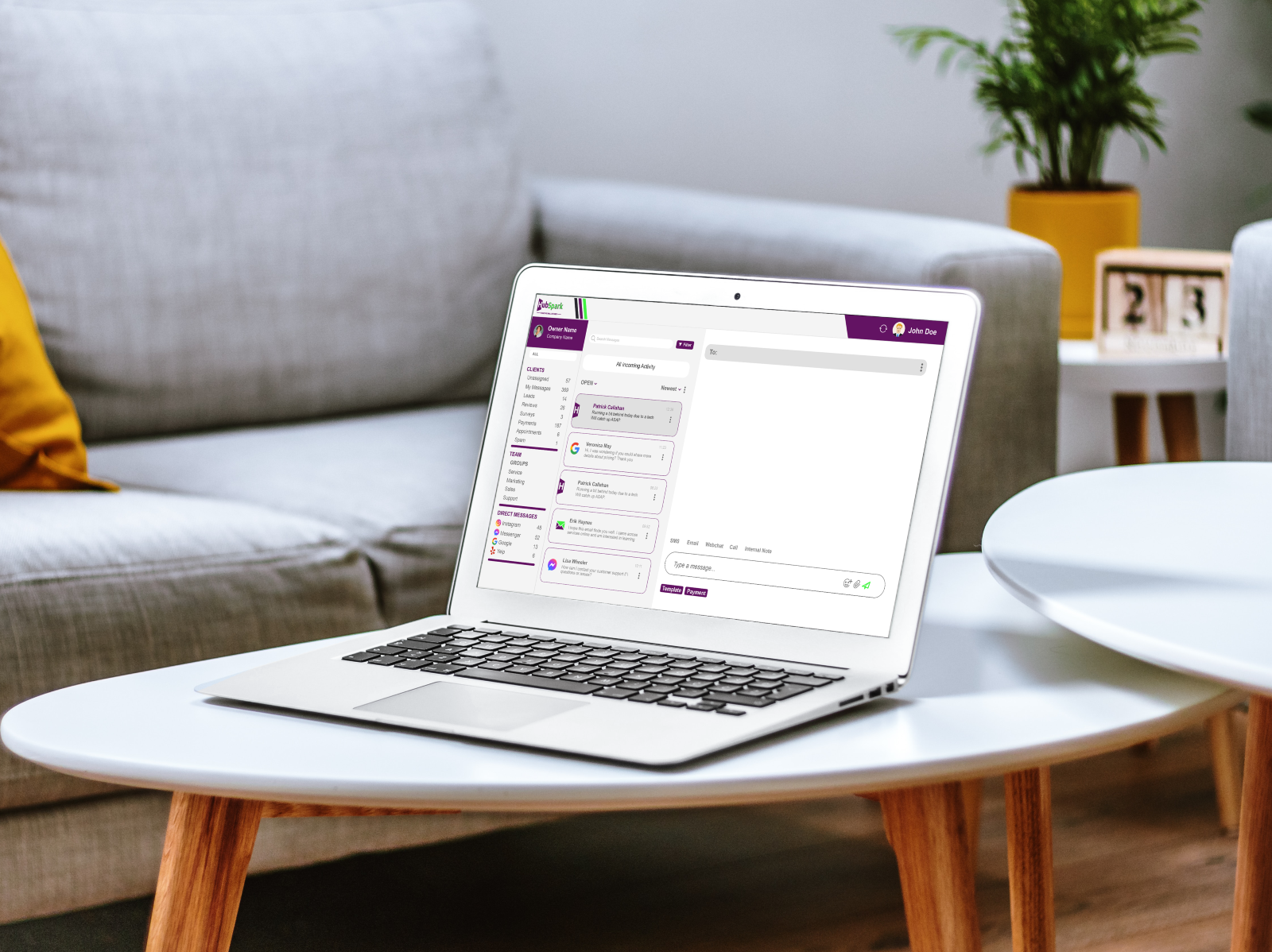
Getting quality leads is about more than just capturing a name or an email. You want real leads, real folks interested in what you do, who are going to purchase or sign u. If you hit the wrong crowd–you waste time and money. About two-thirds of marketers say getting enough traffic is tough, and most face the same problem: targeting the right people.
A quality lead is a person displaying genuine interest and is much more prone to get activated. To attract these leads you have to know your audience, develop good content and choose your channels.
Key strategies for generating quality leads:
- Build detailed buyer personas to guide your outreach.
- Use targeted campaigns instead of broad, impersonal blasts.
- Create content that answers real pain points and questions.
- Test different channels and measure what works.
- Make forms as short as possible—five fields tends to be the sweet spot.
- Filter leads using a three-step qualification process.
- Nurture leads, because half of them aren’t ready to buy initially.
Audience Identification
Knowing who you’re talking to is at the heart of any effective lead generation campaign. If you miss this step, your message flops. Begin by mining your data—site visits, sales history, and social media insights. There’s a lot you can learn from what people are already doing and saying, which can significantly enhance your lead generation strategies.
Hear it straight from users through surveys and feedback forms. Verify age, location, occupation, interests and lifestyle. This aids identifying patterns across cultures and locations, critical for a worldwide brand.
Develop buyer personas that dig beyond superficial details. Put in actual objectives, hurdles, and what motivates them daily. These sketches steer all your outreach, ensuring you address the right problems the right way.
Don’t treat personas as static—adjust them frequently as you gather more data. Markets are moving fast, so keep up with the evolving landscape of potential customers.
Content Strategy
A defined content strategy attracts quality leads. Great content answers questions, solves problems and initiates genuine conversation. For instance, blogs can deconstruct a process, whereas a quick video demonstrates your service.
Infographics can be utilized to effectively encapsulate statistics or procedures for those in a hurry. Experiment with them—what works for one audience may not for another.
The idea is to align what you produce with what your audience values. If you concentrate on real needs and talk their language, you’ll receive attention.
Keep in mind, folks are sick of empty commercials – 81% want brands to demonstrate that they ‘get’ them. Let data drive your topics, and refresh old posts as trends change. If your content is helpful, the leads will arrive.
Channel Selection
Choosing the right channels counts. You want to show up where your audience is– not everywhere. Utilize social media by meeting people where they are—Instagram for the younger crowd, LinkedIn for business pros.
Email is mighty for follow up and keeps you connected with leads who aren’t quite ready to make a purchase. SEO makes your content discoverable when someone searches for a problem you solve.
Experiment with a mix of channels initially, and then tailor your approach based on what proves most effective. Check opens, clicks and form fills.
Drop the not working and put more in the working. That first visit kicks off your lead generation funnel—map every subsequent step so you know where you lose or WIN leads. If you keep testing and learning, your process gets sharper and your leads get better.
Overcoming Common Hurdles in Generating Leads

The lead generation process can seem like a never-ending juggle. You encounter obstacles that impede momentum and squander energy, such as poor follow-up and messy data. To achieve effective lead generation, you must approach each challenge with attention and strategic lead generation strategies.
Inconsistent Follow-Up
Miss the timing with leads and you lose them. The timing is important in the lead generation process. If you wait too long, interest falls off, and your message gets buried. Most potential leads will walk if they don’t hear from you soon. Any sluggish response can translate into missed revenue and a bad brand reputation.
To remedy this, establish an audience-appropriate follow-up schedule. Make a plan so nobody falls through the cracks! Data reveals that extended outreach cadences—greater than five touches—increase your likelihood of success by 160%. Utilize HubSpark Marketing module for automated reminders to help you stay on track—never let a lead slip through the cracks.
Make your messages personal with HubSpark Marketing personalization tokens. Address the qualified lead by name, reference their needs, and demonstrate you ‘get’ what they want. A personal note goes a long way. Experiment with timing and format—emails, calls, or even quick videos.
You are going to see low response rates from your approach, change it. If you continue to do the same, you’re not going to get better results.
Disconnected Tools
When you use a bunch of disconnected tools, lead tracking becomes a pain. You lose information, miss status updates, and lose time transferring info from one location to another. If your systems are disjointed, you don’t have the whole lead story. This confusion costs you sales and can frustrate your team.
One platform for lead management assists. By centralizing all activity — emails, calls, notes — you can view every touchpoint. You are more likely to notice trends and holes this way. HubSpark connects all it’s modules which can help you accelerate activities, and maintains data hygiene.
You can identify what outreach is effective, discover any gaps, and adjust your approach. Investing HubSpark, an all-in-one software platform, saves you time and assists you in serving leads sooner.
Poor Data Insights
Bad data equals bad decisions. If your data’s outdated, inaccurate or dispersed, you may as well flush your efforts down the toilet. You could contact the wrong folks or overlook important segments. Bad data drags down your team and causes you to miss opportunities.
Good data is key. Arrange checkpoints to error-check as data arrives. Leverage content audits to identify weak points. Juice up your blog with data, fresh key terms and obvious graphics.
Analytics assist you observe what has working and what doesn’t. Monitor what content gets clicked, which topics attract the most leads and how visitors behave on your site. Leverage this data to be more intelligent in your decisions and your campaign tuning. Treat your data seriously—obtain permission and secure it so that you establish trust.
The HubSpark Advantage
A unified platform like HubSpark provides you with a single location for all your lead efforts. This eliminates the need to switch from app to app. You can maintain your attention on the leads, not on repair tech headaches. HubSpark brings prospect work, deal tracking and revenue tools together in one place. This way, your data stays consolidated and your team stays aligned.
When you use multiple tools, you get data silos and friction. That bogs you down. With HubSpark, there’s less friction and more time to talk to leads and close deals.
Benefit | What You Get | How It Helps You |
|---|---|---|
Centralized Data | All lead info in one place | Faster access, fewer errors, no data silos |
Multi-Channel Personalization | Smart outreach across channels | Better, more relevant contact with your leads |
Streamlined Workflow | One login for all your tools | Save time, boost team focus, cut busywork |
Rapid Deployment | Quick setup and launch | See results in weeks, not months |
End-to-End Lead Management | From first touch to closed deal | Smooth tracking, less manual work |
Handles Complex Sales Cycles | Built for long sales processes | Stay organized, no drop-offs for big deals |
Revenue Intelligence | Real-time insights and analytics | Make smart choices, spot trends, act fast |
HubSpark’s modules talk to each other, so you can create multi-channel campaigns without duplicating data or generating additional reports. HubSpark can personalize each touchpoint, from initial email to last call, so each prospect receives a message that suits their needs.
This means your team can follow up leads quicker, with less hunch work. You observe what’s working in real time. That allows you to adjust your schedule and continue to optimize.
Too many companies still have stacks of point solutions, each with its own login and own data. That complicates matters. It means you fritter away time exporting, merging, or cleaning up lists.
With HubSpark, you shift all of that to a single dashboard. This saves hours each week, so your team can do what matters: talk to leads, close deals, and bring in revenue. If you run a long sales cycle – like a quarter or two – you need this type of order to stay on top of every step and prevent leads from falling through the cracks.
HubSpark pro9vides businesses quick and reliability functionality. You don’t require months to configure HubSpark. In a matter of weeks, you can observe tangible improvements. Your team does less grunt work, more valuable work.
HubSpark can identify emerging trends, overlooked opportunities, and make informed real-time decisions. HubSpark’s unified platform doesn’t merely address lead gen pain points. You create a platform that scales with you.
Are You Ready to Start Generating Leads? Contact HubSpark Today!

Lead generation fuels growth, and implementing effective lead generation strategies is essential. You require a clever strategy and clever tools to generate actual leads. HubSpark provides a unified place to monitor, categorize, and engage potential leads. You catch holes in your lead generation process more quickly and address them with concrete actions. You get to see leads progress from initial contact through closing, saving hours by bypassing sluggish manual steps. Your team remains aligned, even in rapid transformation, as you maintain clean and easily accessible data. To establish trust, deliver fast responses and transparent information. If you are ready to start generating leads and provide your team with an all-in-one software platform for lead management, contact HubSpark today to get started!
Frequently Asked Questions

What is lead generation?
Lead generation is the art of drawing in and harvesting potential leads who might want to be your customer. It assists marketing teams in seeking out those who want what you’re selling.
How does HubSpark improve my lead generation?
HubSpark simplifies your lead generation process — it automates tasks, tracks interactions, and centralizes your data. This leads to more effective lead generation and qualified leads sooner — more efficiently than they’re used to.
Why is lead management important?
Lead management enhances your lead generation process by allowing you to sort, track, and nurture potential leads from initial contact to sale, increasing the chances of converting them into customers for life.
What makes a lead high quality?
Premium leads fit your perfect customer profile, demonstrate genuine interest, and are likely to purchase. Focusing on effective lead generation strategies will increase your sales and save your team time.
How can I overcome common lead generation challenges?
Be transparent, utilize effective lead generation strategies, and analyze the lead data. These assist you in contacting the proper audience and polishing your marketing efforts.
What is the benefit of a unified platform for lead generation?
One platform integrates your lead generation tools and data, saving you time and reducing errors while providing actionable insights to optimize your effective lead generation strategies.
What are the key steps in the lead management lifecycle?
Whether it’s capturing, qualifying, nurturing, or converting leads into customers, effective lead generation strategies assist you in closing more deals.

 Demo
Demo